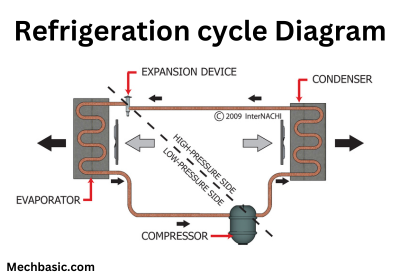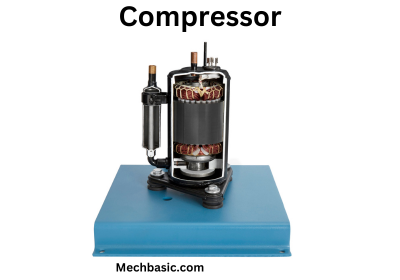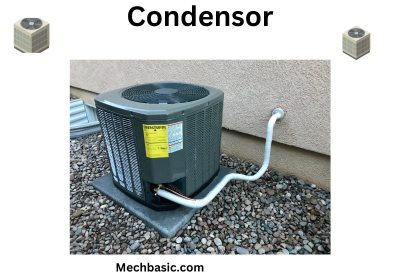In this article:
What is a Refrigeration cycle?
The refrigeration cycle is a process that removes heat from a space or substance to lower its temperature. It consists of four main stages: compression, condensation, expansion, and evaporation, where a refrigerant circulates through components like the compressor, condenser, expansion valve, and evaporator.
This cycle is used in air conditioning, refrigeration, and heat pump systems.
Refrigeration cycle in HVAC:
The refrigeration cycle in HVAC systems follows four key stages: compression, condensation, expansion, and evaporation.
Here’s how each stage works:

Stages of Refrigeration cycle:
| Stage | Component | Function | State of Refrigerant |
|---|---|---|---|
| Compression | Compressor | Increases pressure and temperature of refrigerant gas. | High-pressure gas |
| Condensation | Condenser | Releases heat, turning refrigerant gas into liquid. | High-pressure liquid |
| Expansion | Expansion Valve | Reduces pressure and temperature of refrigerant. | Low-pressure liquid |
| Evaporation | Evaporator | Absorbs heat, turning refrigerant liquid into gas. | Low-pressure gas |
Lets discuss in brief:
1. Compression (High-Pressure, High-Temperature Gas):
- The refrigerant enters the compressor as a low-pressure gas.
- The compressor (typically a scroll, rotary, or reciprocating type) increases the pressure of the refrigerant, raising its temperature and energy level.
- The high-pressure, high-temperature superheated gas leaves the compressor and moves to the condenser.

2. Condensation (High-Pressure Liquid)
- The condenser (usually an air-cooled or water-cooled coil) removes heat from the refrigerant.
- As the refrigerant loses heat to the surrounding air or water, it condenses into a high-pressure liquid.
- This phase change releases the heat absorbed during the evaporation phase.
- The refrigerant exits the condenser as a high-pressure, medium-temperature liquid.

3. Expansion (Low-Pressure, Low-Temperature Liquid)
- The expansion valve (or capillary tube, thermal expansion valve, or electronic expansion valve) controls the flow of refrigerant into the evaporator.
- It rapidly reduces the refrigerant’s pressure, causing a drop in temperature.
- The refrigerant becomes a low-pressure, cold liquid mixed with some vapor as it moves into the evaporator.
4. Evaporation (Heat Absorption, Cooling Effect)
- In the evaporator, warm indoor air blows over the cold refrigerant coils.
- The refrigerant absorbs heat from the air, causing it to boil and turn into a low-pressure vapor.
- This phase change removes heat from the air, cooling the indoor space.
- The refrigerant, now a low-pressure gas, returns to the compressor to repeat the cycle.
Key Takeaways:
- Compressor: Increases pressure and temperature of refrigerant.
- Condenser: Releases heat, converting gas to liquid.
- Expansion Valve: Drops pressure and temperature of refrigerant.
- Evaporator: Absorbs heat, cooling the air.
This continuous loop enables HVAC systems to regulate indoor temperatures efficiently.
Frequently Asked Questions on Refrigeration cycle?
1. What is the refrigeration cycle?
A process that removes heat using a refrigerant, involving compression, condensation, expansion, and evaporation.
2. What are the four main components?
Compressor, condenser, expansion valve, evaporator.
3. What does the compressor do?
Increases refrigerant pressure and temperature.
4. How does the evaporator work?
Absorbs heat and turns refrigerant into gas.
5. Purpose of the expansion valve?
Reduces refrigerant pressure and temperature.
6. Difference between condenser and evaporator?
Condenser releases heat; evaporator absorbs heat.
7. Common refrigerants?
R-134a, R-22, R-410A, R-600a.
8. Refrigeration vs. Air Conditioning?
Refrigeration cools products; A/C cools air.
9. What affects efficiency?
Compressor, refrigerant type, condenser, insulation, ambient temperature.
10. Why does frost form on the evaporator?
Low airflow, refrigerant leaks, or defrost issues.
Other Courses:



Video Demonstration: Refrigeration cycle explained in youtube.
